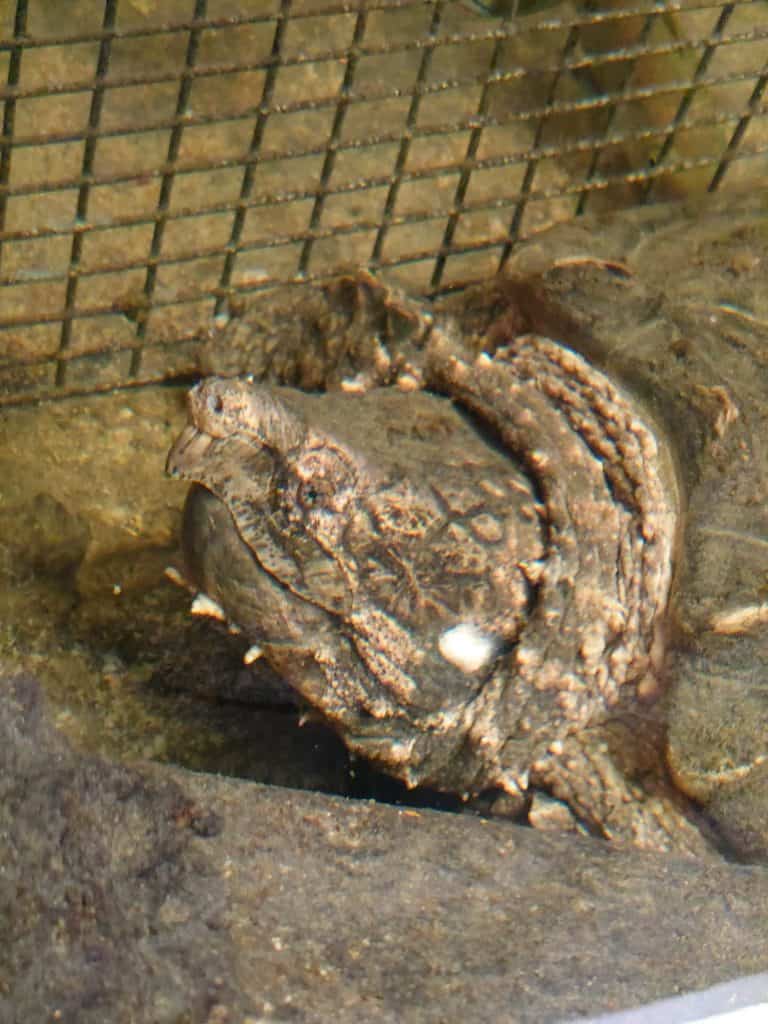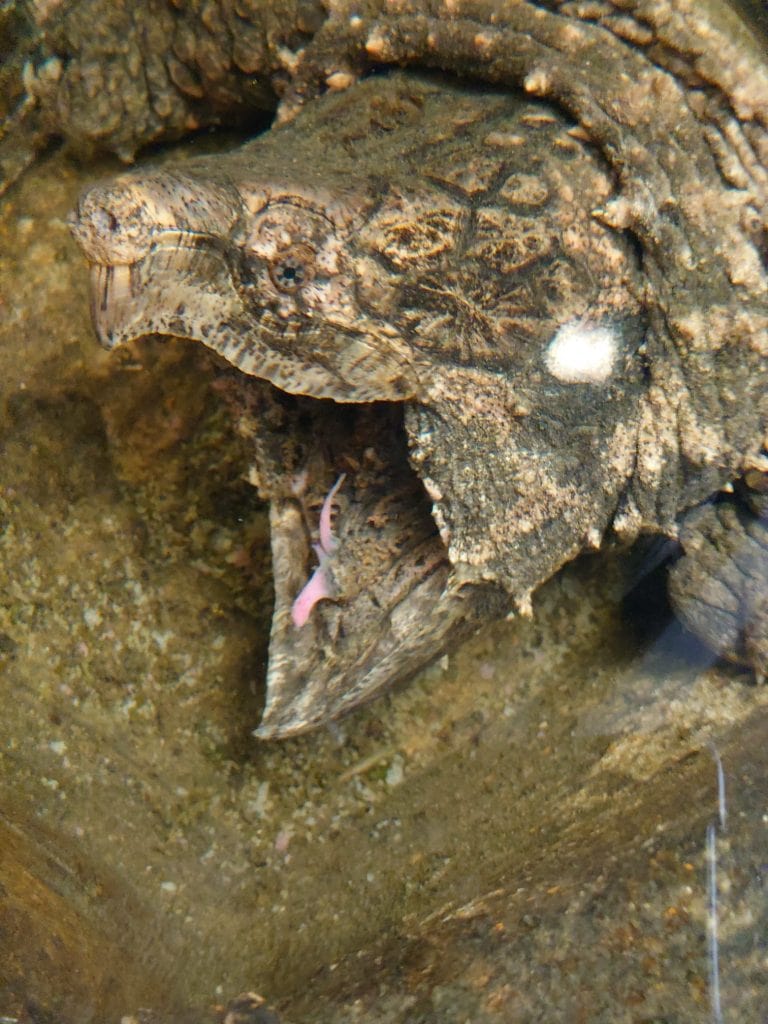The reptile blogs have been very lizard focused. So, I’m going to mix it up a little this time and introduce you to some pretty cool chelonians instead. More specifically, I’m going to tell you about our alligator snapping turtles (Macrochelys temminckii).
Wingham Wildlife Park is home to 2 alligator snapping turtles. One is fairly large and the other is a little smaller with a bit more growing left to do.

They are part of the Chelonia family, which is the family of turtles and tortoises. Plus, they are the largest freshwater turtle in North America and one of the largest freshwater turtles in the world. Alligator snapping turtles can reach a weight of 70-90kg and a shell length of 80-100cm. Although, finding smaller individuals is not uncommon.
They’re related to common snapping turtles and they are the only two living species left in their family, Chelydridae. Telling the two species apart can be as simple as observing their shells. However, common snapping turtles are also much smaller and lighter than the alligator snapping turtle. They only have a maximum shell length of 20-30cm and average weight of 4.5-16kg.
Alligator Snapping Turtle Habitat
These guys are naturally found in North America, primarily from northern Florida to eastern Texas and can be found as far north as Iowa. However, they can also be found in other states and even in South Africa as an invasive species (‘invasive species’ is a term used when an animal is found living somewhere it doesn’t naturally occur).
They spend most of their time in the water, only coming onto land to nest and lay eggs. They often lay motionless long enough for algae to grow on their shells. Plus, they can hold their breath for up to 50 minutes at a time, which benefits them when it comes to both hiding and hunting. Adults prefer lakes, canals, swamps and rivers where they are able to hang out in the deeper water, but young are usually found in small streams. They spend the daytime sitting still but at night they become more active and will explore their environment.
Appearance
Alligator snapping turtles have incredibly prehistoric looking shells. The carapace (the top of the shell) has three large ridges running from the front of the shell to the back and the ridges, also called keels, have very obvious spikes along them.
The plastron (the bottom of the shell) is flat and smooth. The colour of their shell is usually a dark brown colour. Common snapping turtles, as a comparison, have smoother rounded carapaces.
They have a thick and long tail which is covered in scales. Meanwhile, the rest of their body is covered in small, spiked scales but can feel soft to the touch in some areas. The skin can range in colour from brown to grey.
Adding to their prehistoric look, their heads are large and pointed in shape. Due to the shape of their head, the alligator snapping turtles’ eyes sit on the sides of their head. Their beaks (the mouth) have a hook shape to them which helps with grabbing and breaking down food.
Cool Adaptations
A cool feature of the alligator snapping turtle is inside their mouths. If you get close enough to check out the inside of the snapping turtles’ mouth then you’ll notice a small, red worm-like thing on their tongues. This is a form of aggressive mimicry which is called lingual luring.

They use this to lure in unsuspecting prey and the turtles can even wiggle it around to make it look like a real worm. When the prey comes to investigate the wiggling worm, the snapping turtle will grab hold of it with their strong jaws and hooked beak. On this note, if you get close enough to check out the inside of a snapping turtles’ mouth then keep all hands and fingers well clear as your skin is no match for a beak designed to chomp through mollusks, snails, and even other turtles.
As well as luring their dinner to their mouths, alligator snapping turtles actively hunt but will also scavenge too. Fish, mollusks, frogs, insects, snails, mammals, snakes, turtles, and aquatic plants make up the usual diet for the alligator snapping turtle.
Alligator snapping turtles can live up to 45 years old in the wild. Or they can reach 70 years old in captivity.
Threats to Snapping Turtles
The largest threat to alligator snapping turtles are humans. Humans have caused habitat degradation, overharvest the turtles for their meat (despite harvesting turtles being prohibited in all states that they are naturally found in other than Louisiana and Mississippi), catch them as by-catch while fishing and collect them for the pet trade. Young turtles and turtle eggs may be predated on by fish, birds and raccoons. However, adult turtles are safe from most threats of predation.
The alligator snapping turtle has been classified as vulnerable by the IUCN since the 1980’s. Sadly their numbers continue to decline today.
You can find our alligator snapping turtles in the rainforest area of the new Reptile House.


